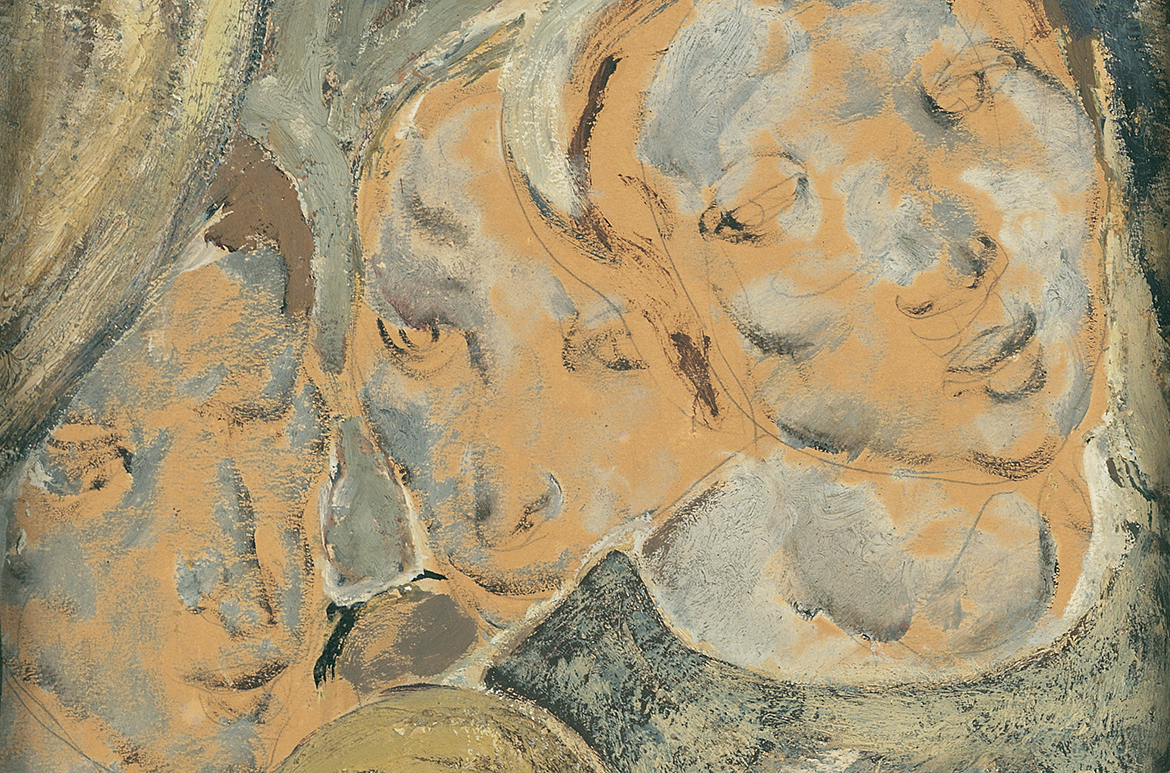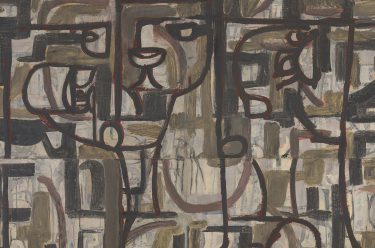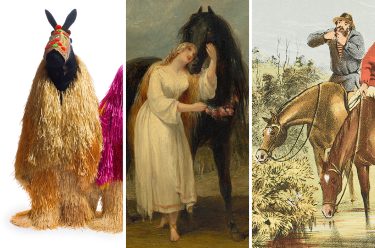‘Birds of Passage’, a display in Queensland Art Gallery’s Philip Bacon Galleries opening 24 February 2024, sees the works of artists Ian Fairweather and Paul Jacoulet illustrating the influence of travel and cross-cultural experience on their respective works. In bringing together these artists, the Gallery celebrates the power of cultural exchange in creative practice.
‘Birds of passage’ are migratory, regularly travelling long distances from season to season in search of sustenance and safety. The expression can also be used to describe restless people, those who are often journeying from one place to another in search of something new, or perhaps to distract from their circumstances. For artists Ian Fairweather and Paul Jacoulet, their travels played both roles, taking them from Britain and France, respectively, to (and then across) the Asia Pacific region during the first half of the twentieth century.
For Fairweather, the experiences gained through his tireless, seemingly searching movement from country to country, directly influenced the evolution of his acclaimed painting practice; while Jacoulet, having suffered from a young age with various illnesses, originally saw travel from his adopted homeland in Japan as a way to convalesce in warmer temperatures, but it soon became the inspiration for his unique approach to Japanese woodblock printmaking.
In bringing together these artists, we celebrate the power of cultural exchange in creative practice.
Ian Fairweather
Born in Scotland in 1891, Ian Fairweather was raised in a military family with the expectation that he, too, would serve in the British Army. With the declaration of World War One in 1914, the 23 year old was sent to the Western Front with his battalion. Captured after just two days of combat, he remained a prisoner of war in Germany for nearly four years. During his captivity, Fairweather’s artistic career began, as he sketched and painted his surroundings, which included scenes such as Herr Braun’s canteen, Torgau c.1914–17 (illustrated), which shows the booth run by Mr and Mrs Braun, where prisoners could buy cigarettes and other items. In a camp library, Fairweather discovered Ernest Fenollosa’s two-volume Epochs of Chinese and Japanese Art (1912), which is thought to be his first introduction to East Asian art and languages.
Ian Fairweather ‘Herr Braun’s canteen, Torgau’ c.1914–17
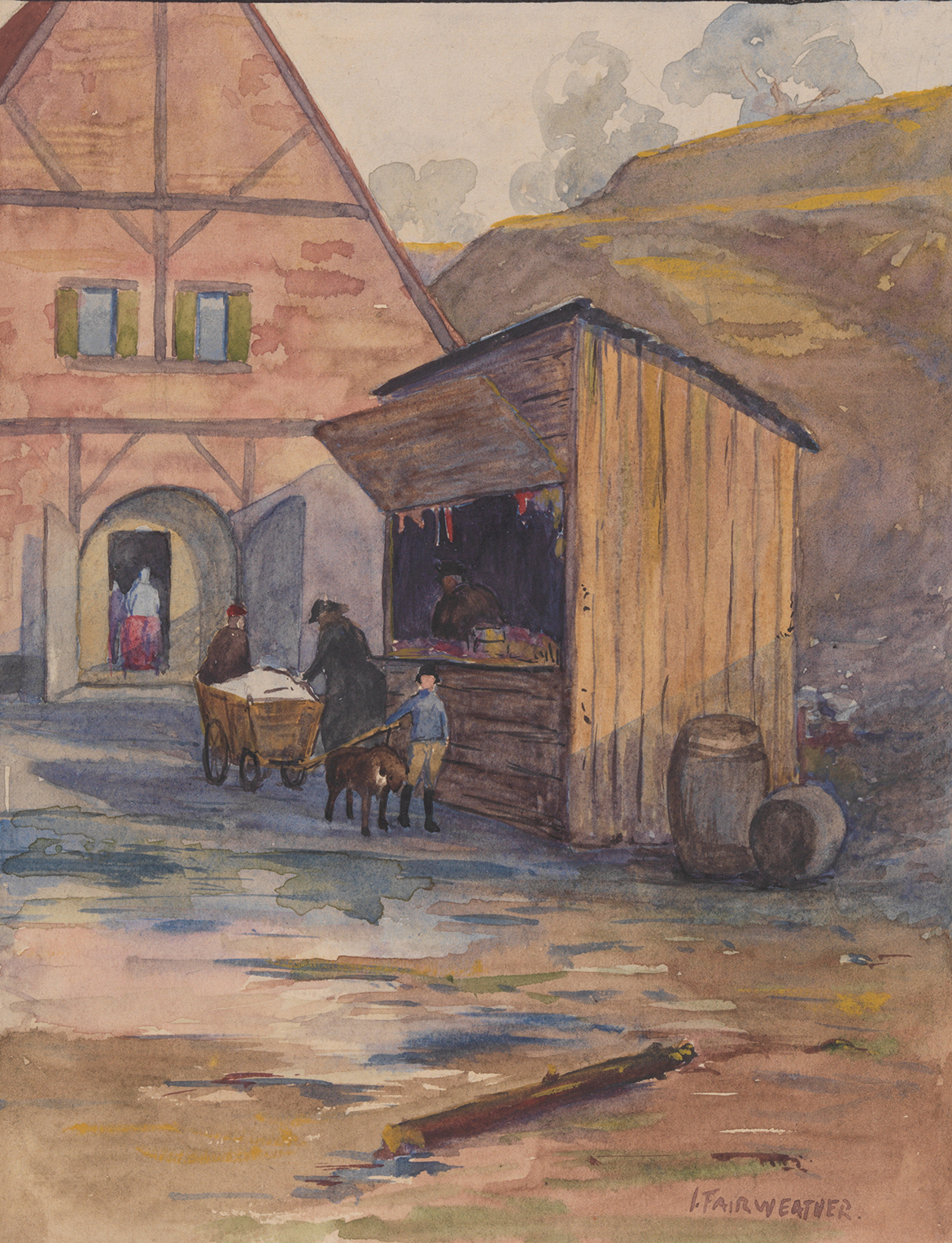
Ian Fairweather ‘Untitled (sleeping figure, female)’ 1920-24

Ian Fairweather ‘Faces at the window’ 1933
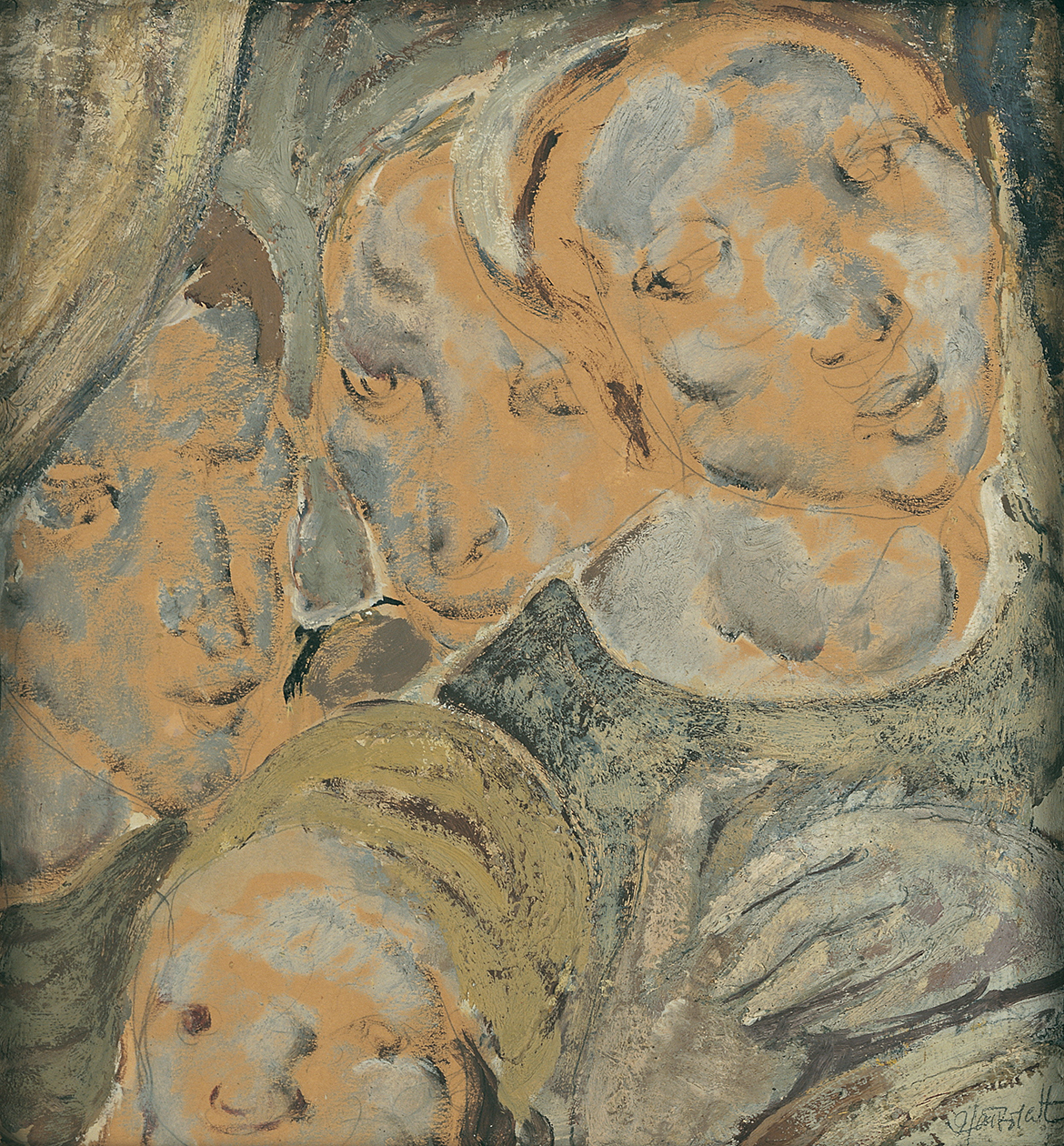
After the war, Fairweather enrolled in the Slade School of Fine Art, London, studying Japanese and, later, Mandarin, at the School of Oriental Studies in the evenings. Although the artist’s time at Slade, between 1920 and 1924, provided him with a solid grounding in the foundations of anatomical drawing and European art — which can be seen in Untitled (sleeping figure, female) c.1920–24 (illustrated) — Fairweather would never graduate. He left the Slade three years into his training dissatisfied with their strictly traditional principles of teaching art. Fairweather later said that his time at Slade had enabled him to recognise that he did not want to paint as though through the lens of a camera, but to express the effect that a scene had on him.1
Fairweather led a nomadic life until the early 1950s, restlessly journeying throughout Asia and the Pacific, until eventually calling Queensland’s Bribie Island home in 1953. His time living in Shanghai and Beijing (then Peking) in the 1930s had the greatest influence on his practice; having been inspired by China’s master calligraphers, Fairweather would begin painting his studies of people and places, such as Faces at the window 1933 (illustrated), with only a few brushstrokes, stating:
I wanted only to capture the essence of my surroundings, the life, colour, and movement, and to seize the moment to present in paint all the emotions that these arouse in me.2
Ian Fairweather ‘(Snake charmer)’ c.1949

Ian Fairweather ‘Kite flying’ 1958
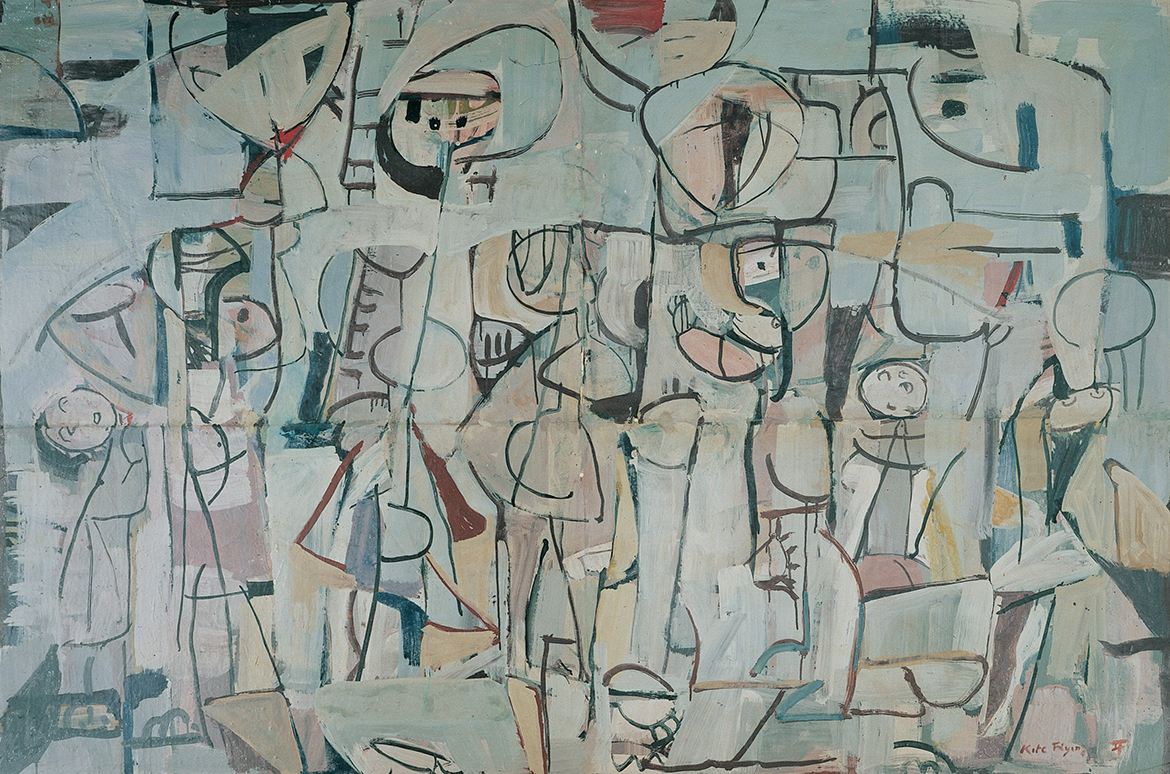
Like many of Fairweather’s works from the 1930s, Faces at the window captures his enduring interest in Chinese art and life, especially its people. The delicacy with which Fairweather presents these moments in time, through expressive lines and quiet tones of layered paint, is both contemplative and intimate. While Fairweather’s practice moved further into abstraction during the 1950s and 60s, many of the works he produced were anchored in the experiences of his travels and calligraphic markmaking. Kite flying 1958 (illustrated), with its abstracted faces, strings, kites and sky, shows how the artist captures the ancient story of the Chinese kite-flying festival, Chung Yeung, through the fusing of memory and geometric rhythms.
Although Fairweather, at 82 years old, passed away in 1974 — 2024 marks the 50th anniversary of his death — he is still regarded as an artist who significantly influenced Australian art.
Paul Jacoulet
Paul Jacoulet was born in Paris in 1896 and moved to Tokyo, Japan, at just three years of age. In a move that was unusual for the time, his French parents insisted that he attend a local primary school. He therefore grew up immersed in Japanese culture while also receiving tutoring in French, Italian, English and Spanish. In the summer of 1907, Jacoulet briefly travelled to France with his father, where he discovered artworks by the celebrated painters Gustave Courbet, Paul Gauguin, Henri Matisse and a young Pablo Picasso. On his return to Tokyo, he began calligraphy lessons and later trained in the techniques associated with painting works in the style of ukiyo-e (‘pictures of the floating world’). By 1927, Jacoulet had transitioned from traditional Japanese painting to creating watercolours; and instead of following accepted conventions of ukiyo-e, including depictions of beautiful women, he started to focus on the lives of the people around him.
In 1929, Jacoulet set out on the first of many journeys to the Pacific, visiting Saipan (Northern Mariana Islands), Yap and Truk (Caroline Islands), and eventually Palau (Micronesia), Jaluit (Marshall Islands), New Caledonia and Tahiti. His travels later extended to China, along with regular visits to Korea. During his longer trips, the artist sketched local people going about their daily activities, returning to Tokyo with hundreds of drawings and watercolours, which would form the basis of his woodblock prints. Around 1934, the artist established the Jacoulet Institute of Prints; this changed the established Japanese model of a publisher working with an artist, carver and printer to produce ukiyo-e prints, to Jacoulet playing the role of both publisher and artist, with the assistance of trusted collaborators.
Paul Jacoulet ‘Amoureux a Tarang. Yap. Quest Carolines’ 1935
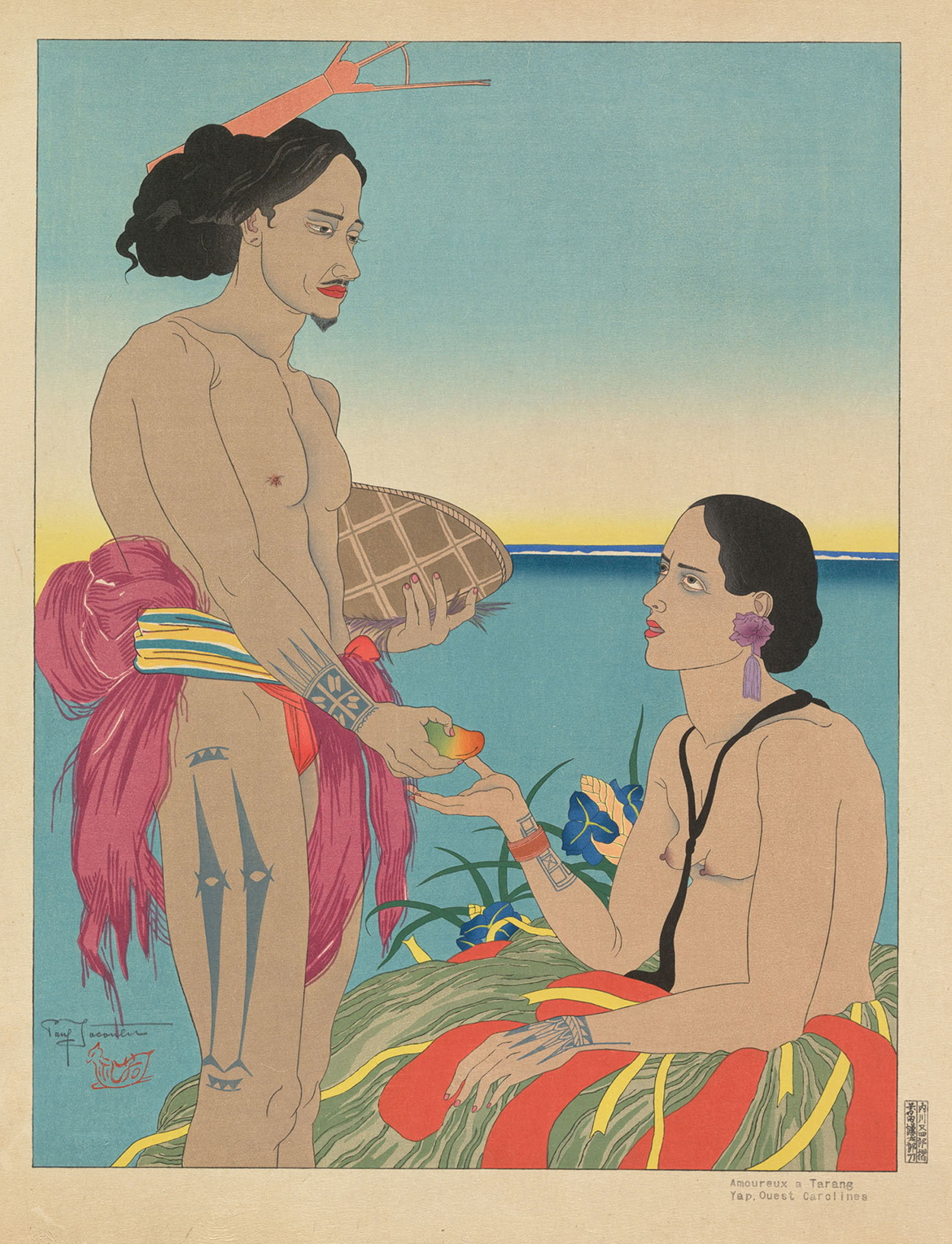
Paul Jacoulet ‘Femme tatouée de Falalap. Ouest Carolines’ 1935
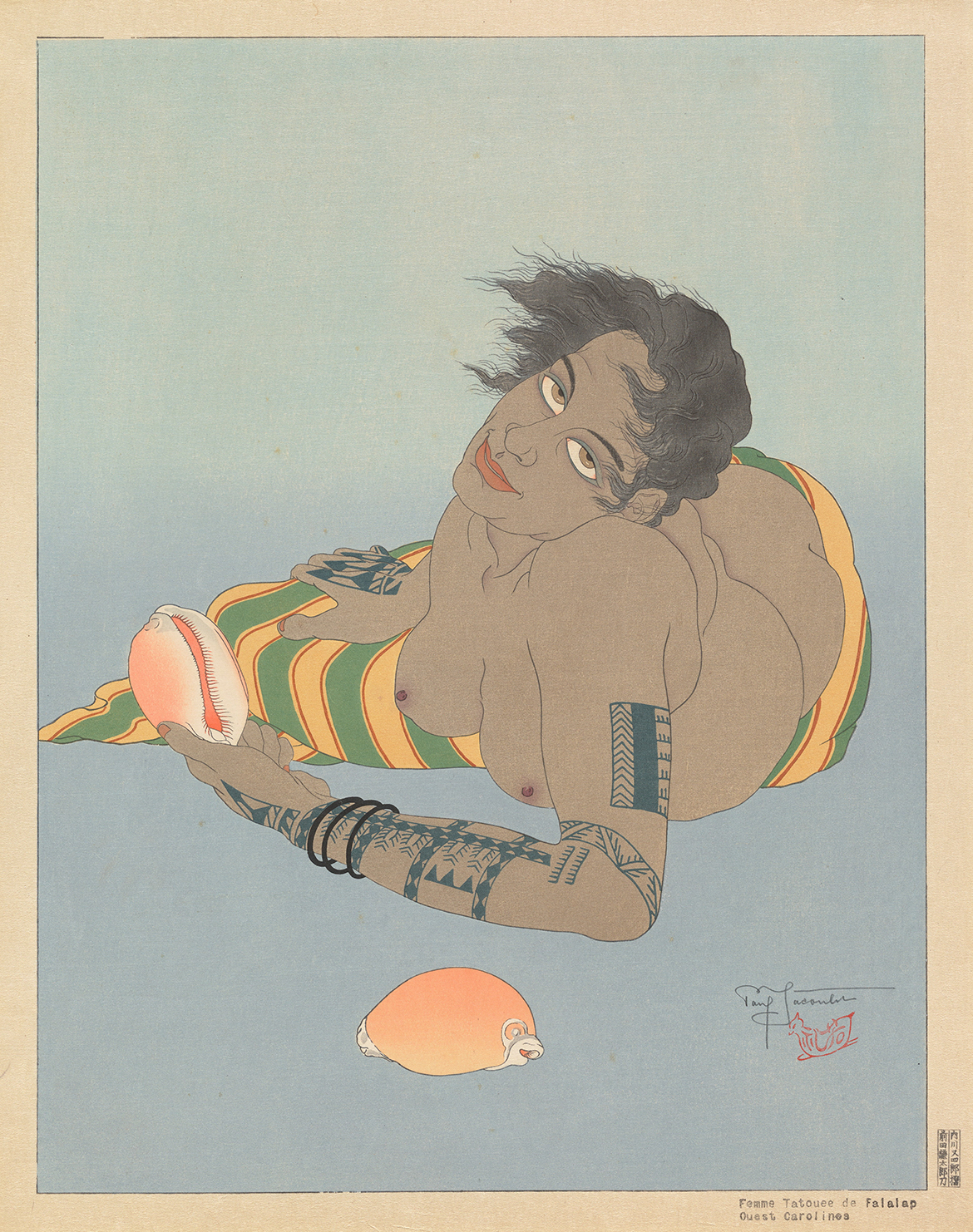
One of the early prints Jacoulet produced from his travels is Femme tatouée de Falalap. Ouest Carolines (Tattooed woman of Falalap, West Carolines) 1935 (illustrated), which hung over the artist’s bed and is believed to be one of his favourites. In this work, Jacoulet’s unique approach to capturing the life of his subject through their facial expression, fluid linework and detailed observation of their body adornments and clothing, can be clearly seen. As master woodblock carver Yamagishi Kazue commented at the time:
[Jacoulet’s] portraits possess a power of line, combing the ukiyo-e style and the distinctive precision of Western drawing, and his masterful brushwork captures the dynamism of the human body . . . The expression he brings to the eyes is, in particular, unrivalled by any master past or present, and his gentle, refined colouring is something to which all Japanese woodblock prints should aspire.3
Paul Jacoulet ‘Souvenirs d’autrefois, Japon’ 1941
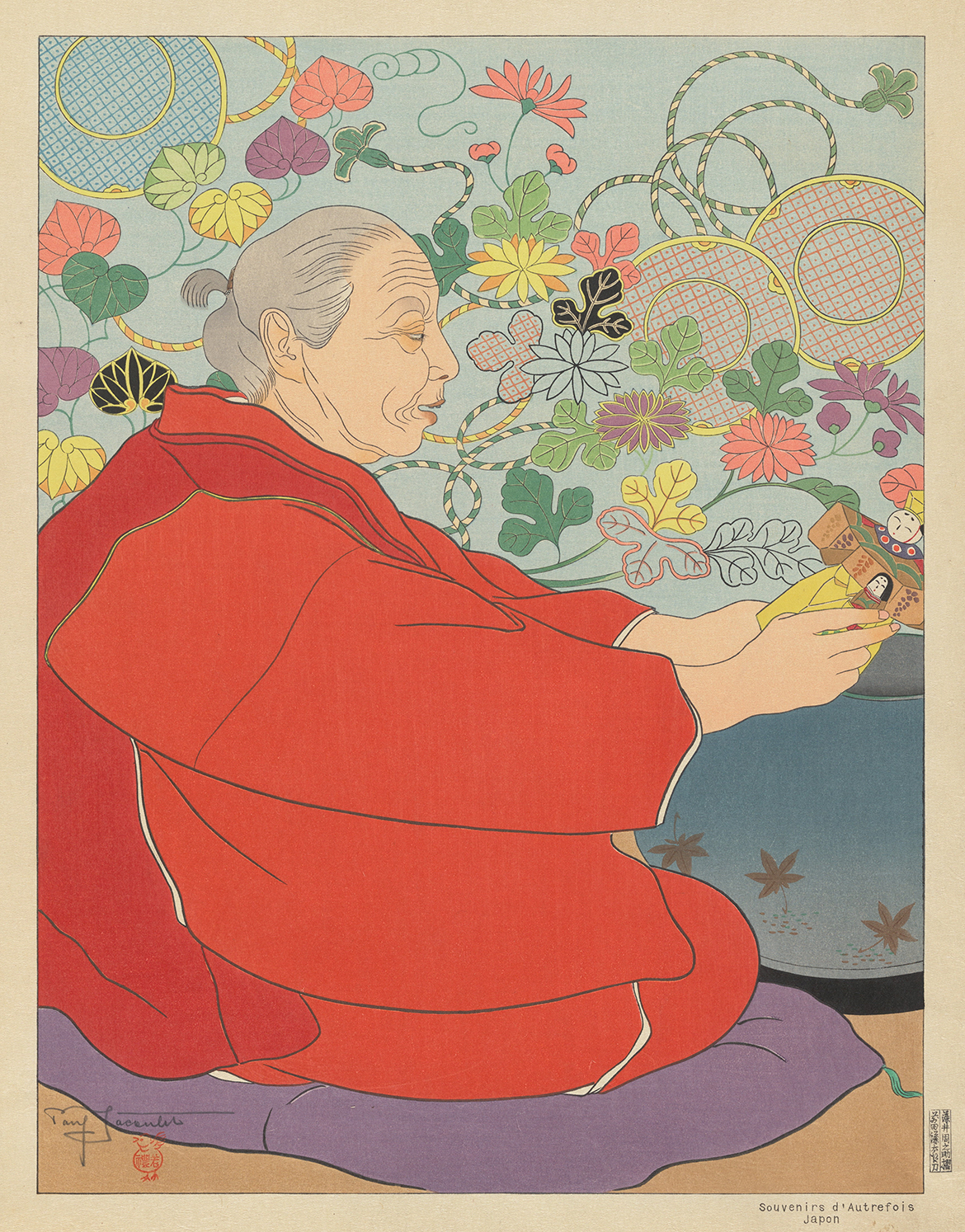
Paul Jacoulet ‘Fleurs du Soir. Truck-Toloas’ 1941

Paul Jacoulet ‘Les perles, Mandchoukuo’ 1950

Paul Jacoulet ‘Le Mandarin aux lunettes, Mandchoukuo’ 1950
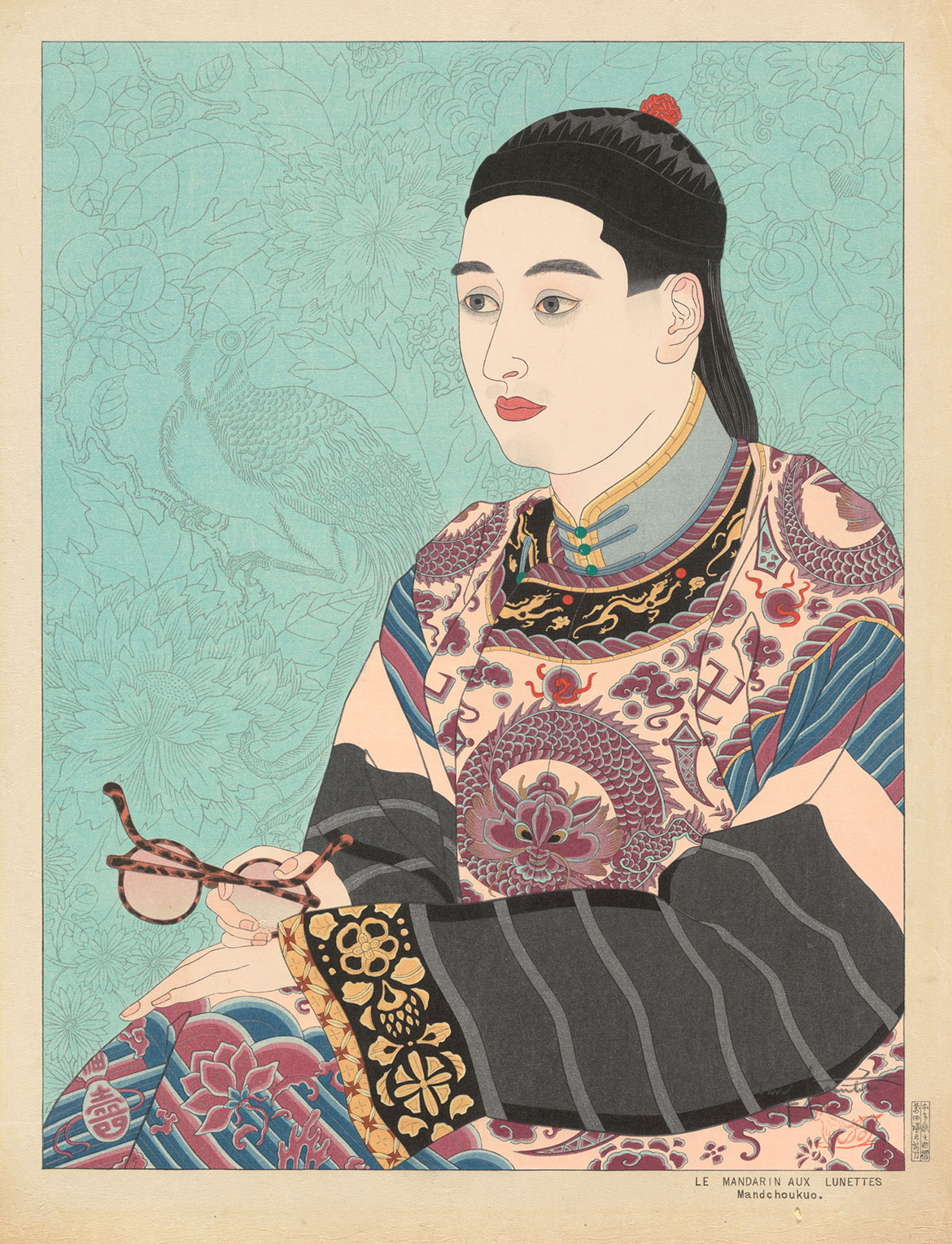
As Jacoulet’s financial resources grew, he would bring further innovation to ukiyo-e printmaking by creating new pigments and using unconventional materials such as metal dust, crushed mica and pearls. A rare pair of works completed by the artist in 1950 — Les perles, Mandchoukuo (The pearls, Manchukuo) (illustrated) and Le Mandarin aux lunettes, Mandchoukuo (The Mandarin with glasses, Manchukuo) (illustrated) — feature silver, which he used to create the woman’s delicate veil and the ornate filigree background of the male sitter. To create his watercolour-like prints, Jacoulet would also use as many as 300 pressings against up to 60 woodblocks. Most artists averaged 20 blocks.
Jacoulet died in 1960 at the age of 64. More than six decades later, his prints still surprise the viewer with their blending of a deep engagement with the cultures of Asia and the Pacific and a European perspective on Japanese creative traditions.
Dr Jacinta Giles is Assistant Curator, International Art, QAGOMA.
This text is adapted from an essay first published in QAGOMA’s Members’ magazine, Artlines.
The first rotation of ‘Birds of Passage: Ian Fairweather and Paul Jacoulet’ is in Galleries 7 and 9 of the Philip Bacon Galleries, Queensland Art Gallery, from 24 February 2024 until 27 January 2025, with a second rotation opening in early February 2025 until late January 2026.
The support of the Airey Family enabled the Gallery to build its holdings of works by Jacoulet up from a single print to 28.
Endnotes
1 Murray Bail, Fairweather, Murdoch Books, Millers Point, NSW, 2009, p.17.
2 Bail, p.42.
3 Yamagishi Kazue, ‘The woodblock prints of Paul Jacoulet’, in Ukiyo-e Geijutsu (The Art of Ukiyo-e), July 1935, pp.66–7.
#QAGOMA
